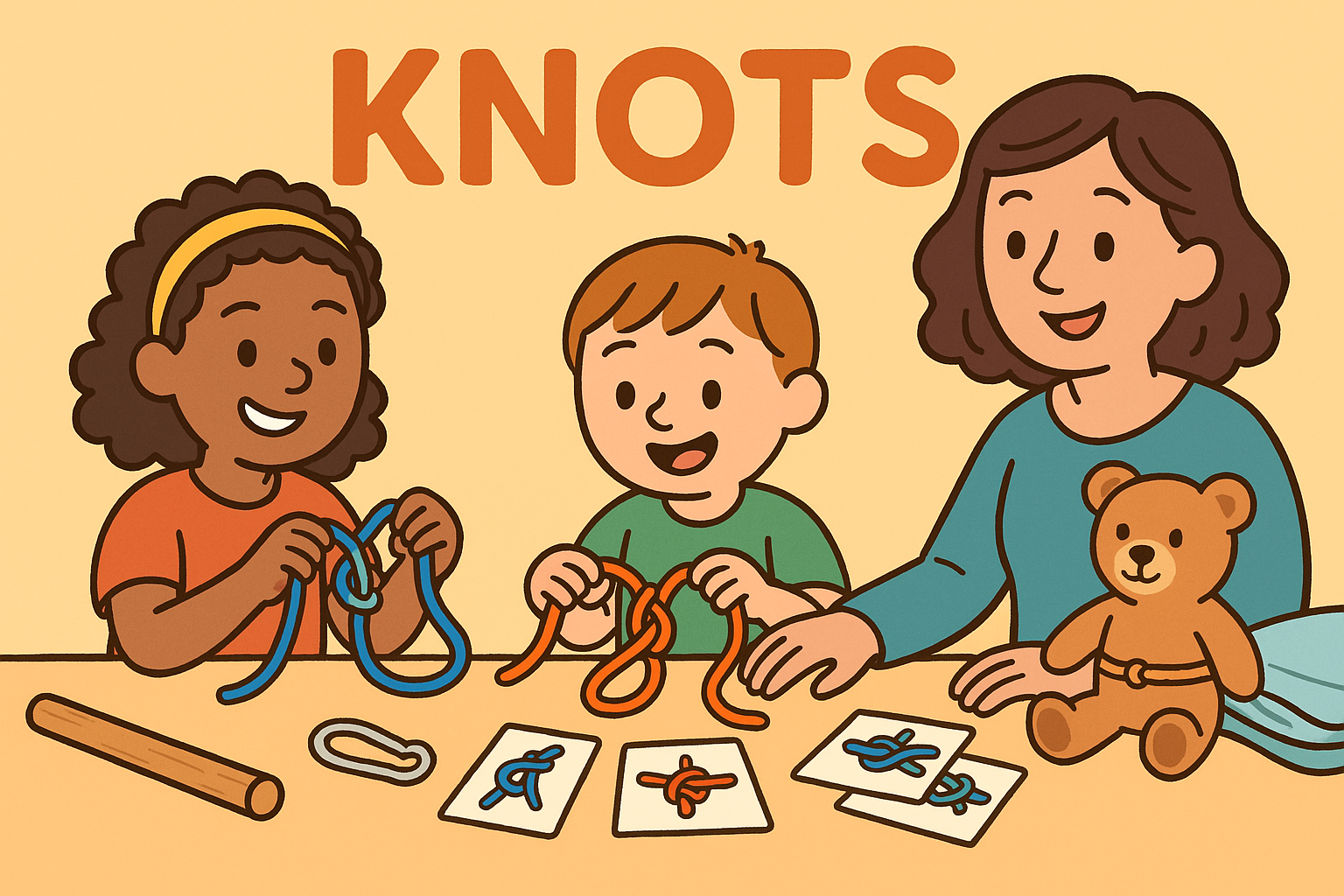Learn a few classic knots with simple, visual challenges. It’s practical, great for fine motor skills, and a lovely way for parents and carers to coach calm, step-by-step problem-solving.
Materials
- Short lengths of soft rope or cord (30–60 cm)
- Old shoelaces or ribbon
- Metal ring or carabiner (optional)
- Wooden dowel or smooth stick
- Paper or card for simple “knot cards”
- Masking tape
- Marker pen
Tools
- Scissors (adult use or supervised)
- Hole punch (optional, for cards)
Steps
- Set up: Cut a few cords and tape the ends to stop fraying. Draw quick picture cards for 3–5 knots (e.g., overhand, reef/square, figure-eight, clove hitch, bowline).
- Warm-up loop: Show how to make a simple loop and pull the end through for an overhand knot. Let everyone practise slowly.
Overhand knot instructions (animatedknots.com)
- Join two ropes: Use two colours to teach a reef (square) knot—right over left, then left over right. Tug both ends to check it sits neat and flat.
Square knot instructions (animatedknots.com) - Stronger stopper: Make a figure-eight knot as a tidier stopper. Compare how it looks and feels versus the overhand.
Figure of eight knot instructions (animatedknots.com) - Around a stick: Wrap the cord around the dowel for a clove hitch (wrap, cross, tuck). Try lifting the stick gently to test grip.
Clove hitch knot instructions (animatedknots.com) - Make a loop that won’t slip: Tie a bowline around the ring or a stable object. Use the classic story (“the rabbit comes out of the hole…”) if helpful.
Bow line knot instructions (animatedknots.com)
Variations
- Shoelace Bootcamp: Practise bows on a spare trainer or cardboard “shoe”.
- Fort Builders: Use clove hitches to secure blanket corners to chair legs (gently, no climbing).
- Knot Sorting Game: Mix real knots and ask, “Which one joins? Which one stops?”
- Nature Tie: On a walk, tie gentle loops to bundle sticks or make a leaf garland (no tight ties on living plants).
- One-Hand Challenge: Older kids try tying an overhand or figure-eight with one hand.
- Rescue the Teddy: Build a safe “hoist” with a bowline loop to lift a soft toy onto a chair.
Why It’s Great
- Fine motor strength – Twisting and pulling builds finger dexterity for everyday tasks.
- Problem-solving – Following sequences encourages patience and focus.
- Real-world skills – Useful for shoelaces, camping, crafts, and quick fixes at home.
- Confidence boost – Small wins add up as knots “click” into place.
- Together time – Calm, side-by-side coaching nurtures connection.
Safety Tips
⚠️ Any activity with ropes or cords is a potential choke hazard! Be very careful doing this with younger children and follow the safety tips below.
- Supervise closely with cords and keep lengths short (30–60 cm) for practice.
- Never tie anything around a neck or body.
- Avoid tying to moving parts or high places.
- Use soft rope and clear floor space to reduce trip hazards.
- Adults handle scissors and check knots used in play can be untied easily.
- Disassemble knots after the activity.


Leave a Reply